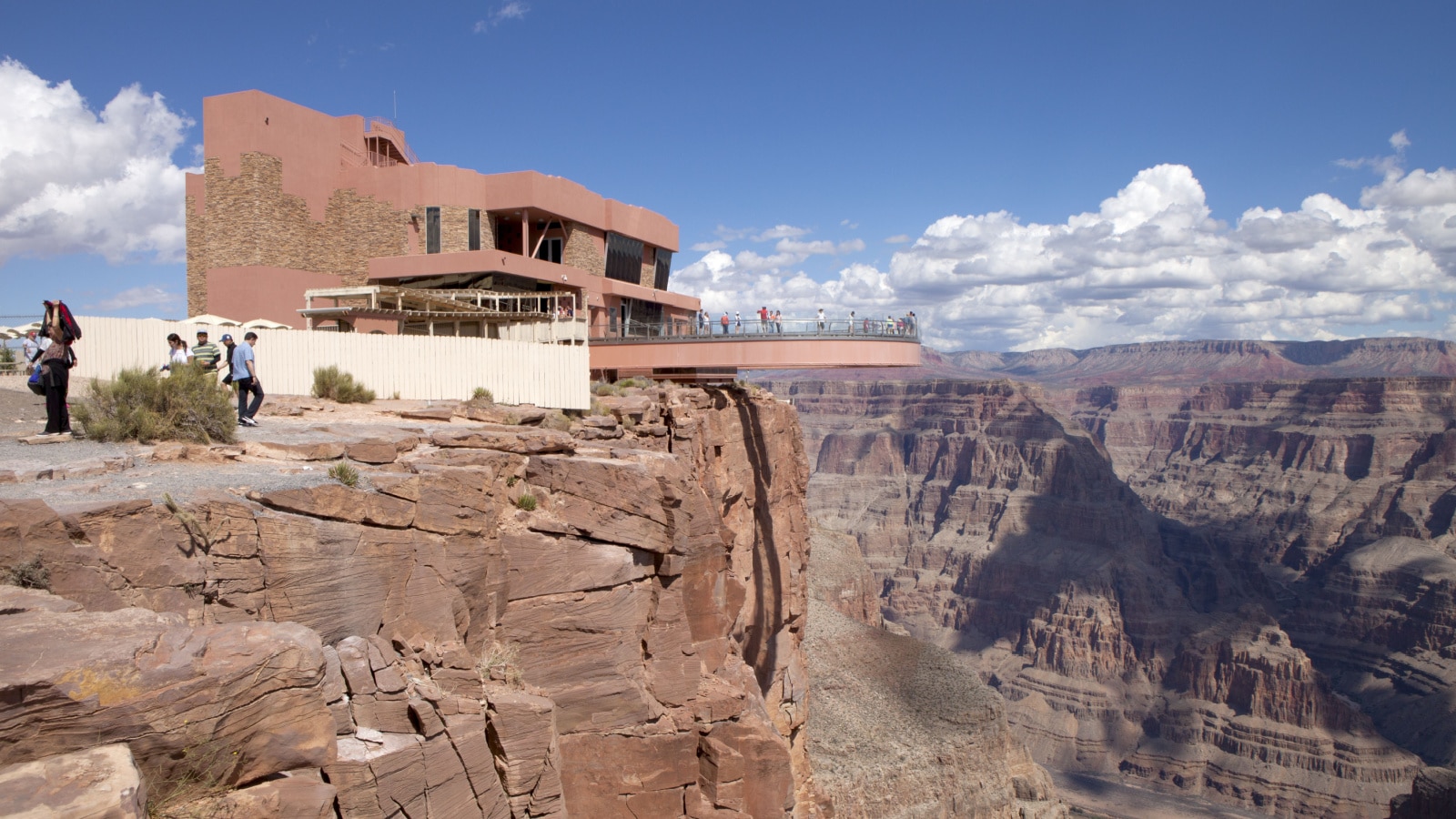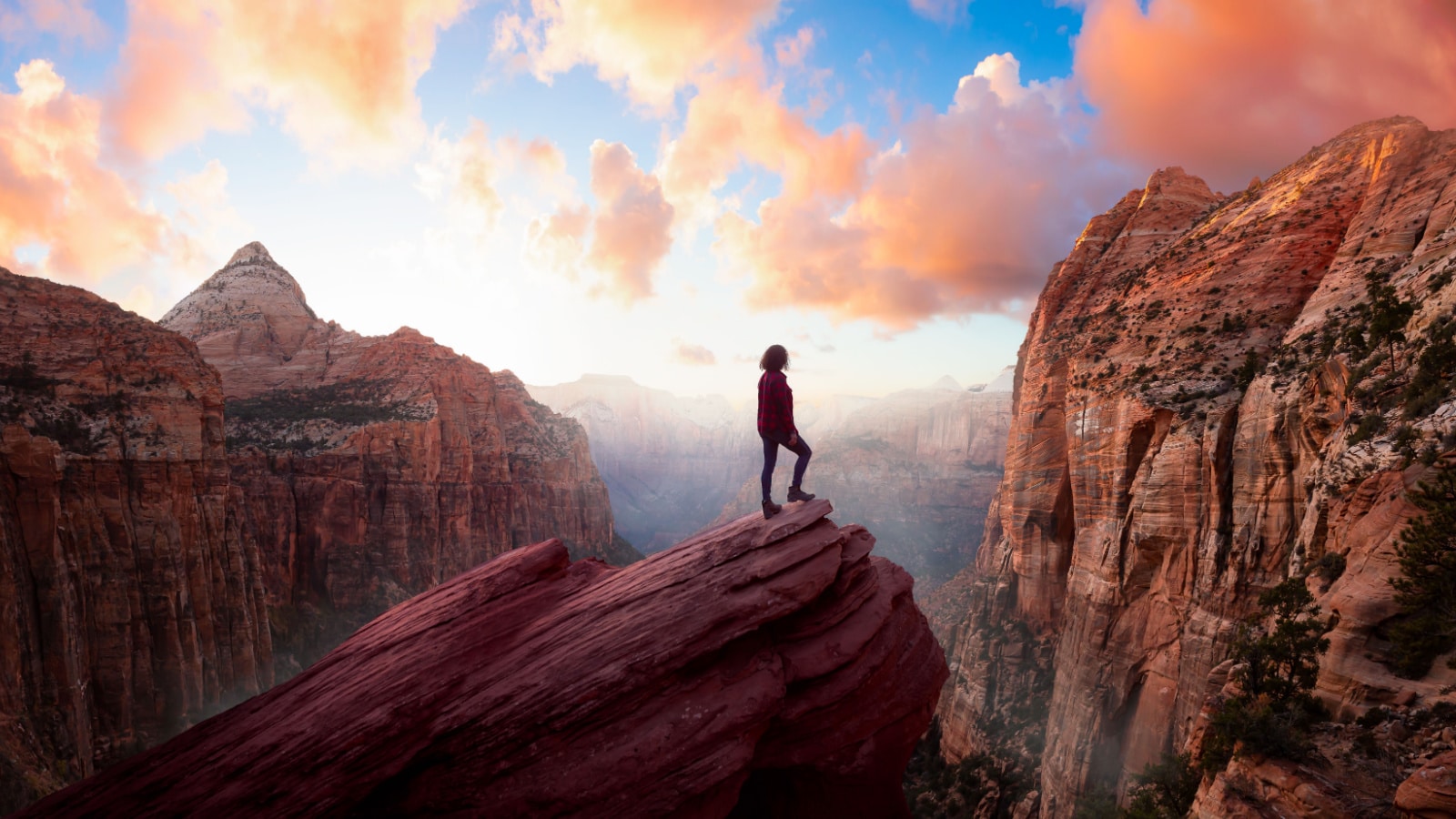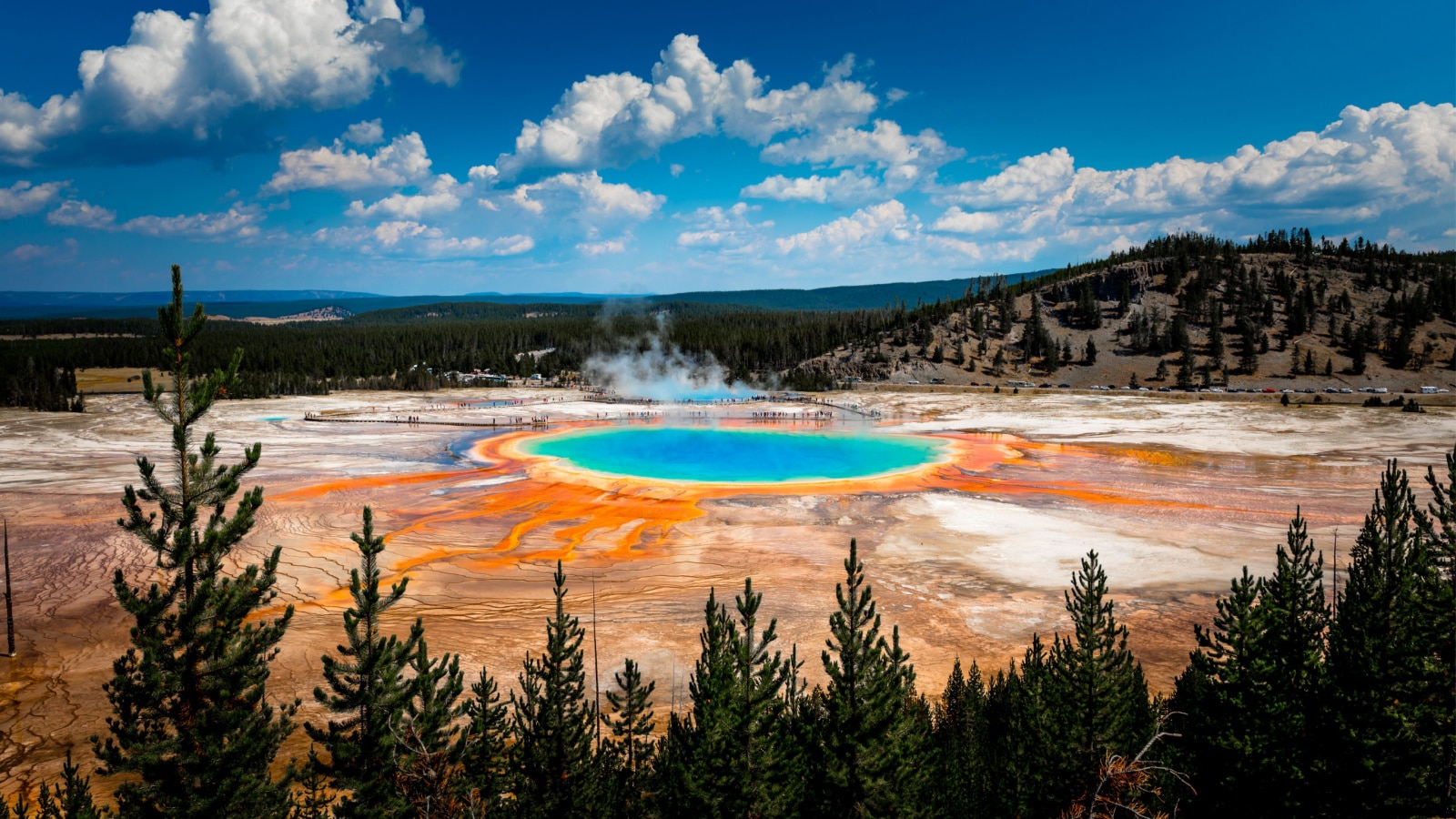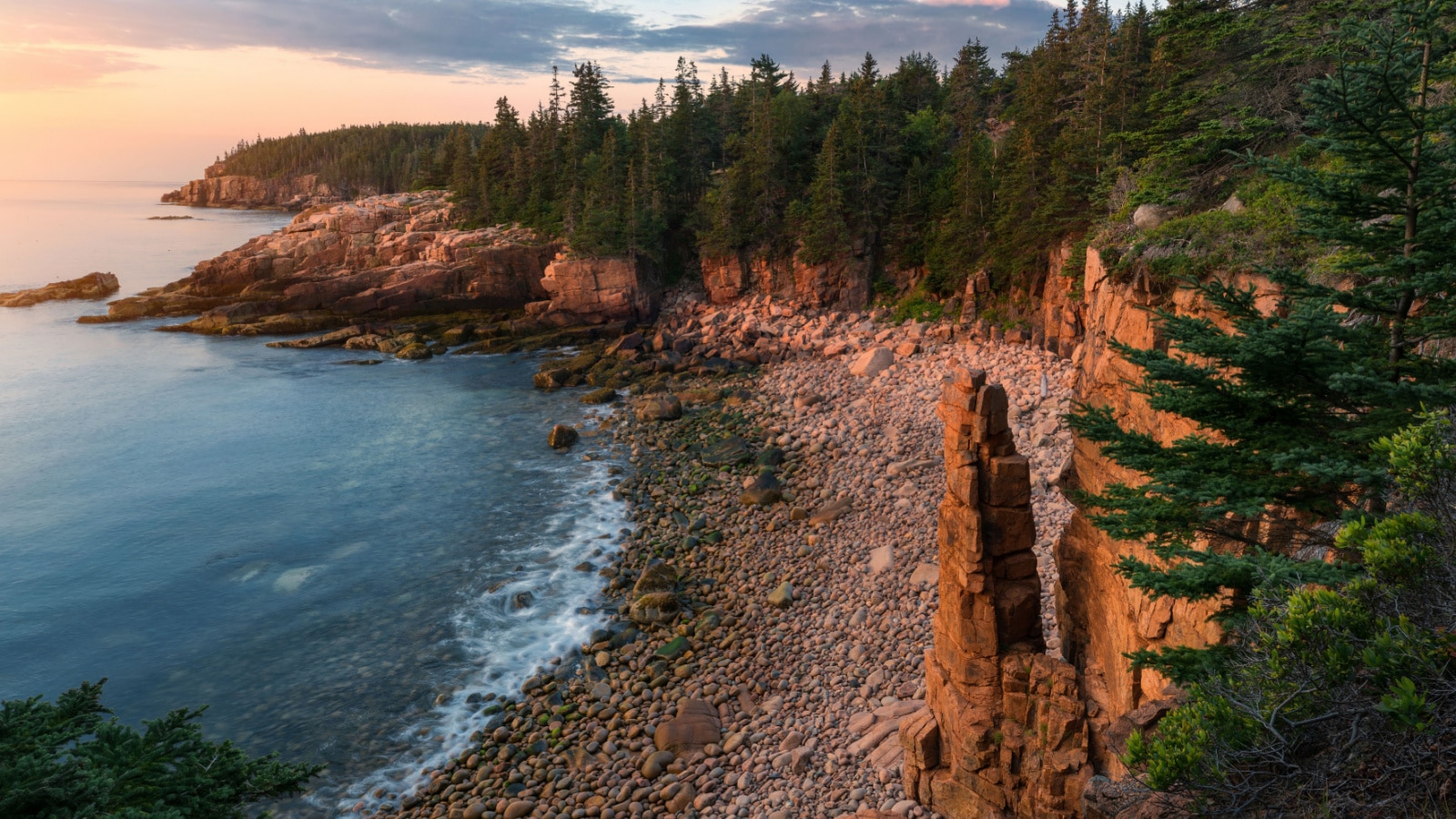How Many National Parks Are There?
The simple answer to the question, “How many national parks are there?” is 63. But a deeper look beyond that number reveals dozens of magnificent national parks in the United States, from Alaska to Maine to Texas and many places in between!
National Parks in the U.S. offer visitors a plethora of activities, including hiking, wildlife observation, fishing, camping, scenic views, and more.

An Overview of the U.S. National Park System
Since 1916, the National Park Service (NPS) has been responsible for preserving and caring for America’s national parks.
The National Park System comprises 425 national park sites in the United States, spanning over 84 million acres, located in every state and the U.S. Territories of Puerto Rico, the Virgin Islands, American Samoa, and Guam. These beautiful and historic places attract over 318 million annual visitors.
While there are 20 different NPS designations – including National Historic Sites, National Monuments, National Recreation Areas, National Lakeshores, National Battlefields, and National Seashores – just 63 sites in the system carry the National Park designation.
30 individual states and two U.S. Territories are home to at least one NPS site with a National Park designation. These famous parks, such as Yosemite, Yellowstone, Acadia, and Zion, are internationally renowned for their beauty and significance.
The U.S. government has chosen these parks for various reasons, including their importance and natural splendor.
History of U.S. National Parks
The idea for national parks in the United States goes back to the early 1800s when President Andrew Jackson signed legislation allowing Congress to preserve land around what is now known as Hot Springs, Arkansas.
Since then, many leaders and environmentalists have established and expanded the National Park System, including John Muir, known as the Father of the National Parks, and Presidents Abraham Lincoln and Theodore Roosevelt.
President Woodrow Wilson signed the act that created the National Park Service on August 25, 1916. Yellowstone National Park, the first national park in the United States, was established by an act signed by President Ulysses S. Grant on March 1, 1872.
By 1920, more than a dozen national parks had been established, including Acadia National Park, Mount Rainer National Park, and Yellowstone National Park.
According to the National Park Service, new additions to the National Park System are typically made through Congressional acts, and national parks can only be created through such acts. However, the President can proclaim national monuments on federal lands under the Antiquities Act of 1906.
Fast Facts About U.S. National Parks
- There are 63 national parks in the United States, the newest of which is New River Gorge in West Virginia. It was redesignated as a national park in 2020.
- According to data from the National Park Service, more than 15 billion people have visited U.S. National Parks since 1904, including more than 300 million in 2022.
- The oldest national park is Yellowstone National Park. It was established in 1872.
- The biggest national park is Wrangell-St Elias in Alaska. It covers more than eight million acres.
- The smallest national park is the Gateway Arch National Park in Missouri, which encompasses 192.83 acres.
- California has the most national parks (nine), Alaska is second with eight, and Utah is third with five.
The Most Visited U.S. National Parks

Great Smoky Mountains National Park, Tennessee and North Carolina
With more than 12 million visitors in 2022, Great Smoky Mountains National Park was the most visited U.S. national park last year. As one of the most visited parks in the country, it drives tourism in Sevier County, Tennessee.
The park, which straddles the ridgeline of the Smokies, is home to some of the highest mountains in the eastern United States, such as Mount LeConte and Clingmans Dome. It spans over half a million acres and is famous for its tall mountains, nature trails, waterfalls, forests, and stunning fall foliage.
With so much to see and explore, a visit (or two or three) to the Great Smoky Mountains National Park is a must because visitors can find something new to explore each time.

Grand Canyon National Park, Arizona
President Teddy Roosevelt took an immediate liking to the Grand Canyon and designated it as a national park in 1919.
Situated in northwest Arizona, the Grand Canyon National Park covers more than 1.2 million acres, including the famous Grand Canyon, which is considered one of the Natural Wonders of the World.
Today, millions of visitors come to the national park to enjoy its stunning views and awe-inspiring vastness, which must be experienced up close and personal to be fully appreciated.
Visitors can experience the sheer majesty of the Grand Canyon in a variety of ways, including hiking and white-water rafting. In addition, the national park is home to national monuments, museums, and other attractions that create an unforgettable experience.

Zion National Park, Utah
Nestled in Southwestern Utah, Zion National Park is arguably one of the nation’s most unique national parks: one with unique geography and a wide spectrum of life zones that allow a diverse collection of plants and animals to live and thrive.
Animal life in the national park includes nearly 300 bird species and dozens of mammals and reptiles across desert, woodlands, and coniferous forests among its four life zones. The natural layout of the park includes rivers, natural arches, mountains, and canyons, including the prominent 15-mile-long Zion Canyon.
Zion National Park provides outdoor enthusiasts with a little bit of everything, including a stunning and rugged natural landscape, thriving plant and animal life, and incredible scenic views.
The Oldest U.S. National Parks
Yellowstone National Park, Wyoming
Spanning across parts of Wyoming, Montana, and Idaho, the nation’s first national park is also widely considered the world’s first national park.
Yellowstone, apart from being the namesake of a popular NBC show, is well known for its wildlife – which includes hundreds of species – and natural features, including the famous Old Faithful geyser.

The park spans an impressive area of over 3,400 square miles, which includes canyons, mountain ranges, rivers, Yellowstone Lake (one of the highest elevation lakes in the country), and the Yellowstone Caldera (the largest super volcano in North America).
With so much space and so many features, it’s little wonder why Yellowstone is a popular place for fishing, boating, camping, and other outdoor activities.
Sequoia National Park, California
Spread out over more than 400,000 acres, Sequoia National Park is well known for its natural features, including the giant sequoia trees, which grow hundreds of feet tall.
The park is home to the General Sherman tree – the largest tree on Earth by volume. The surrounding Giant Forest is also home to five of the ten biggest trees in the world.
Sequoia National Park is home to Mount Whitney, the highest point in the contiguous United States at more than 14,000 feet above sea level.
The area, first settled by Native Americans, is arguably one of the most scenic forests in the country and is actively preserved in coordination with nearby Kings Canyon National Park.
Yosemite National Park, California
All U.S. national parks have a certain beauty and charm, but Yosemite stakes a claim as the most beautiful national park.
Nearly 95 percent of the park is designated wilderness, and Yosemite has been recognized worldwide for its glaciers, cliffs, rock formations, waterfalls, sequoia groves, and so much more.
When visitors aren’t catching glimpses of elk or bison or hiking one of the park’s trails, they can stop and stare in awe at Yosemite Falls, one of the largest waterfalls in the world, which flows for more than six months each year.
The views at Yosemite are breathtaking, and visitors may find themselves returning more than once to marvel at the sheer majesty of the park.
Other Unique National Parks in the U.S.
Isle Royale National Park, Michigan
Michigan’s only national park, an archipelago in the middle of Lake Superior, offers visitors unparalleled solitude and a bounty of activity.
Once they’ve taken a ferry ride to Isle Royale, visitors can lose themselves in the park’s distinctive wilderness. There are more than 150 miles of hiking trails, with loops that lead hikers to caves, mountain peaks, and lighthouses.
Visitors can also explore the park by water, using a canoe or kayak to take in scenic views, observe wildlife, or cast a line to fish. Those looking for a rustic camping experience can camp in the park, waking up to a stunning sunrise and taking in the natural beauty.

Acadia National Park, Maine
More than 4,000 islands dangle from Maine’s massive coastline, but Acadia National Park, the only national park in Maine, stands out as the Crown Jewel of the North Atlantic Coast.
The name Acadia means “Heaven on Earth,” and Acadia’s beauty has captured the hearts of explorers and settlers for hundreds of years.
Visitors to the park can choose from recreational options, including scenic drives, summit hikes with breathtaking views, coastal trails with the ocean nearby, camping options, fishing, and more.
The park is home to three lighthouses, including the famous Bass Harbor Head Lighthouse with its red light, as well as the Baker Island Lighthouse and the Bear Island Lighthouse.
Gates of The Arctic National Park, Alaska
Gates of the Arctic is the country’s northernmost national park, sits north of the Arctic Circle (as the name may suggest), and is the country’s second biggest national park.
With no roads, trails, or campsites (visitors have to fly or hike into the park), Gates of the Arctic is an untouched wilderness. Still, with no set routes, it’s perfect for outdoorsmen and park enthusiasts who want to explore the rugged Alaskan wilderness at their own pace.
Gates of the Arctic is one of the least visited national parks in the country due to its remote location. However, it offers an unparalleled experience with opportunities for wildlife viewing, mountain climbing, hiking, and enjoying the solace of the outdoors.
Visit a U.S. National Park Today

Now that the question, “How many national parks are there?” has been answered, the next thing to do is make plans to visit one! Take a drive, book a flight, or even take a bus to see one of more than five dozen national parks.
The indescribable natural beauty, the wealth of activities, and the chance to see some of the country’s most famous sites make national parks an easy addition to any bucket list.
Visitors of all ages can find something amazing during a visit to a national park that will help them make enjoyable, lasting memories.
This article originally appeared on Wealth of Geeks.

